| Photo of the month – September 2022 |
[German version] |
That’s so heavy – surely it can’t move!
or
Physics? What’s that got to do with it?
This month, we can offer you a prime example of sheer ignorance of the laws of physics. Figure1. shows the results in all their horrible glory. An entire load of bundled pipes slipped forwards a few meters and penetrated or tore off the end wall. It is quite probable that the cab was also badly damaged in the process. The driver was uninjured. The driver and loader both had far more luck than they had knowledge of physics.
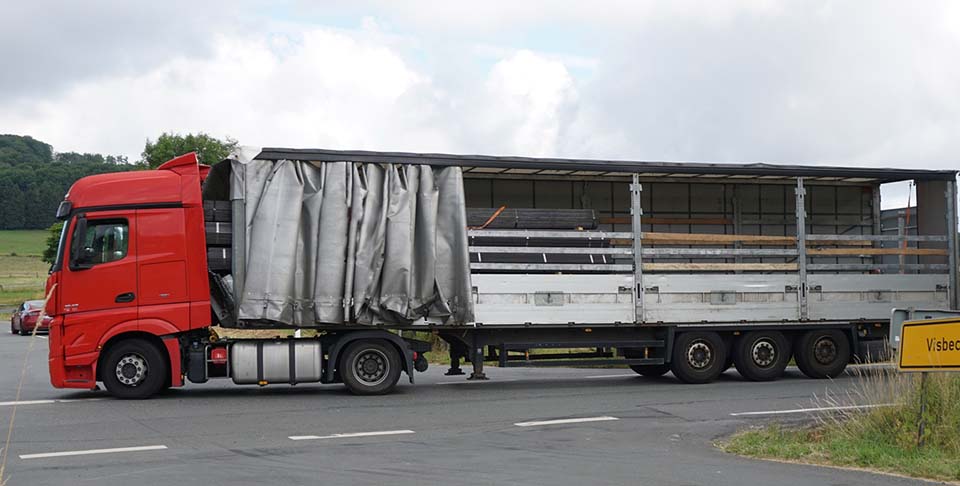
Figure 1 [Hochsauer Region Police]
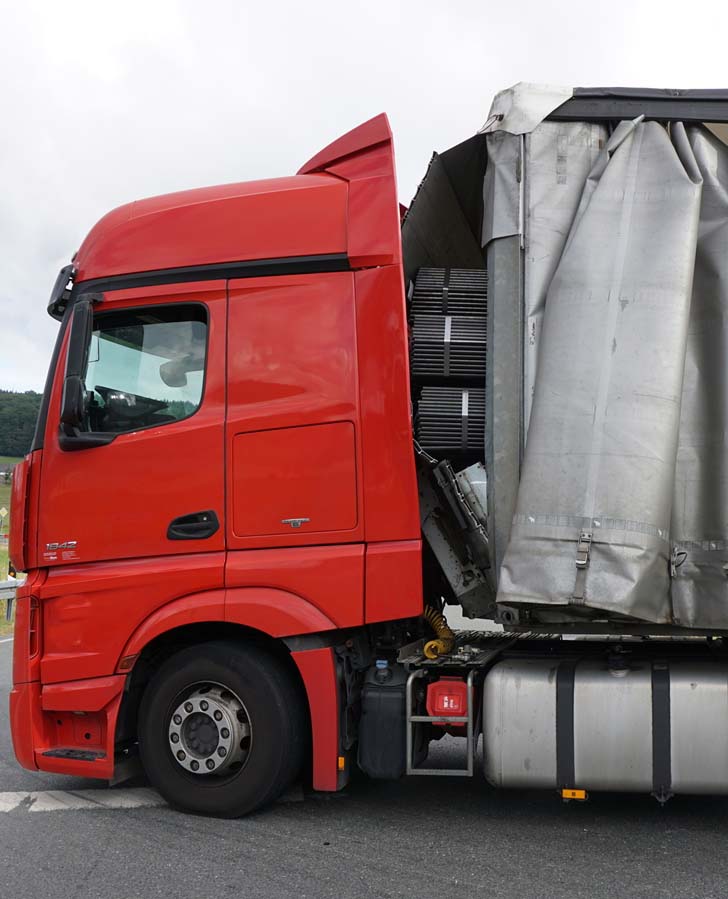
Figure 2 [Hochsauer Region Police]
This figure shows the effects of kinetic energy when it is converted to deformation energy. Even though the load has already slipped half the length of the trailer, it seems as though it was trying to persuade the cab to join in the fun.
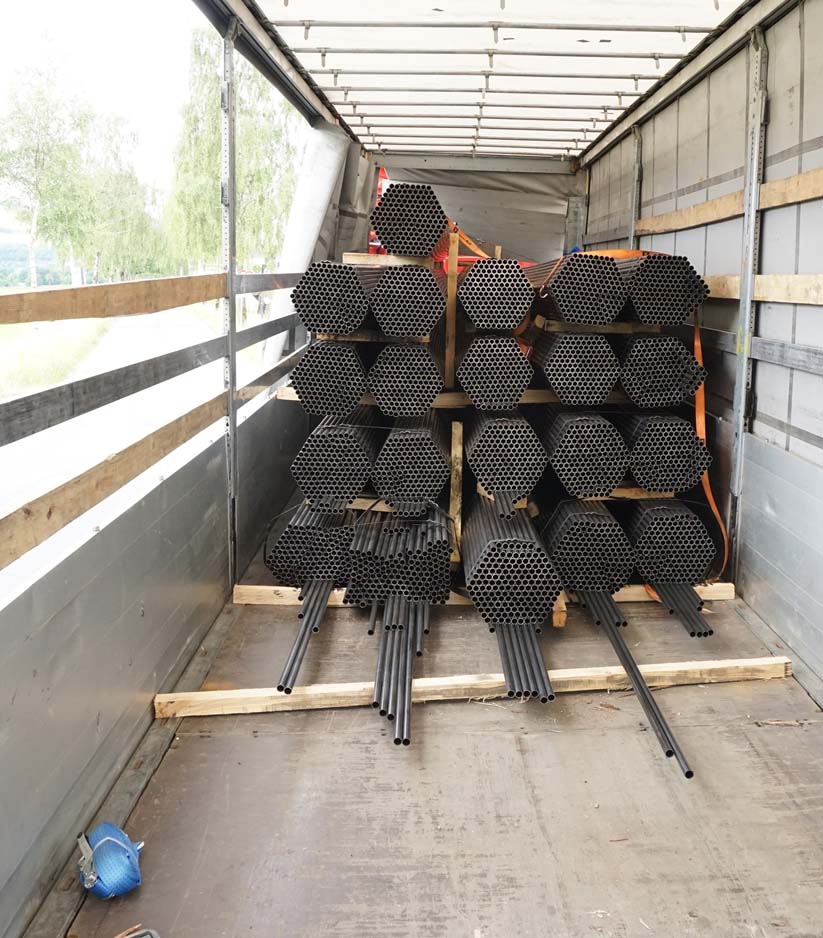
Figure 3 [Hochsauer Region Police]
The entire load block is now in the area covered by the first two stanchions. To achieve correct load distribution, the overall center of gravity of the load would have to be aroung1 ¼ stanchion gaps further back. But it isn’t, which means that the load has slipped by at least 4 ¼ m. And still managed to wreak havoc with the end wall. “Bravo!”
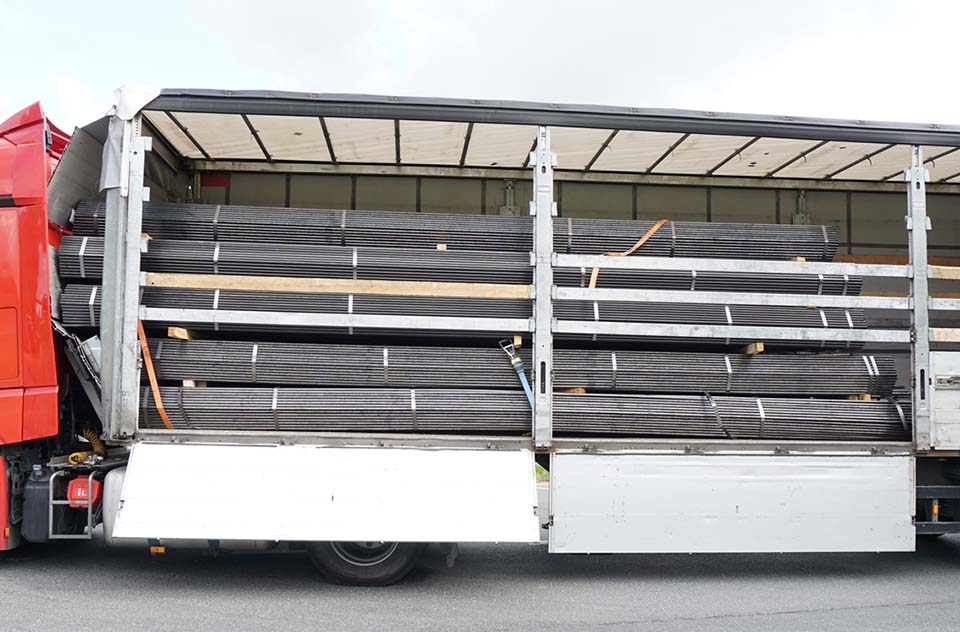
Figure 4 [Hochsauer Region Police]
If we take a critical look at the way in which the load was secured, it is difficult to believe what we see. The load was bundled, but not lashed down as we may have expected.
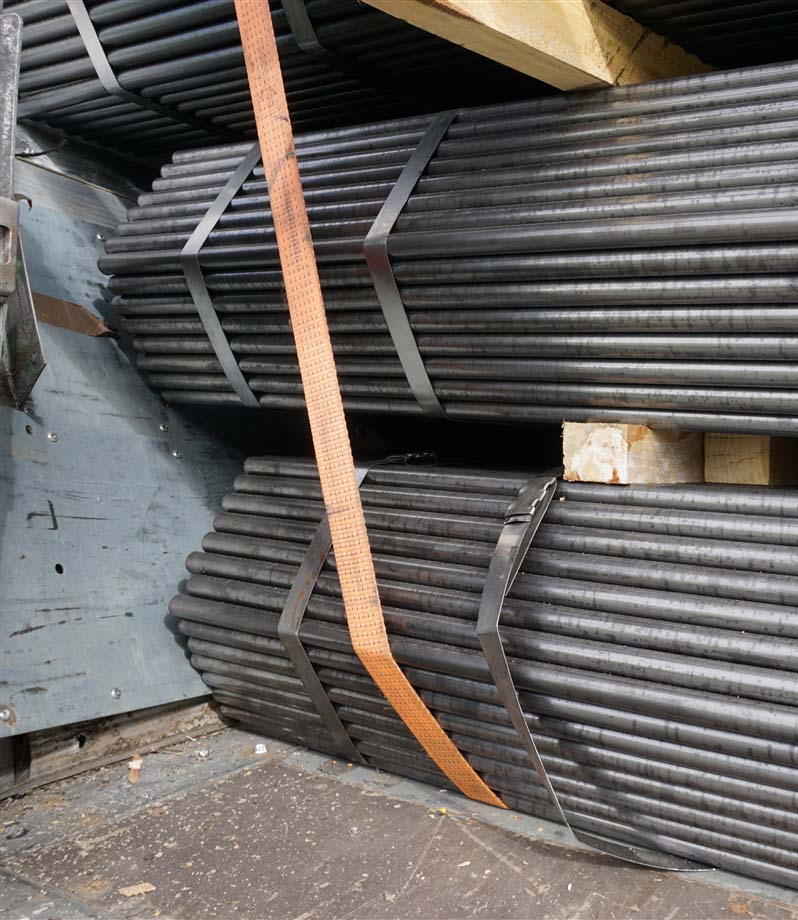
Figure 5 [Hochsauer Region Police]
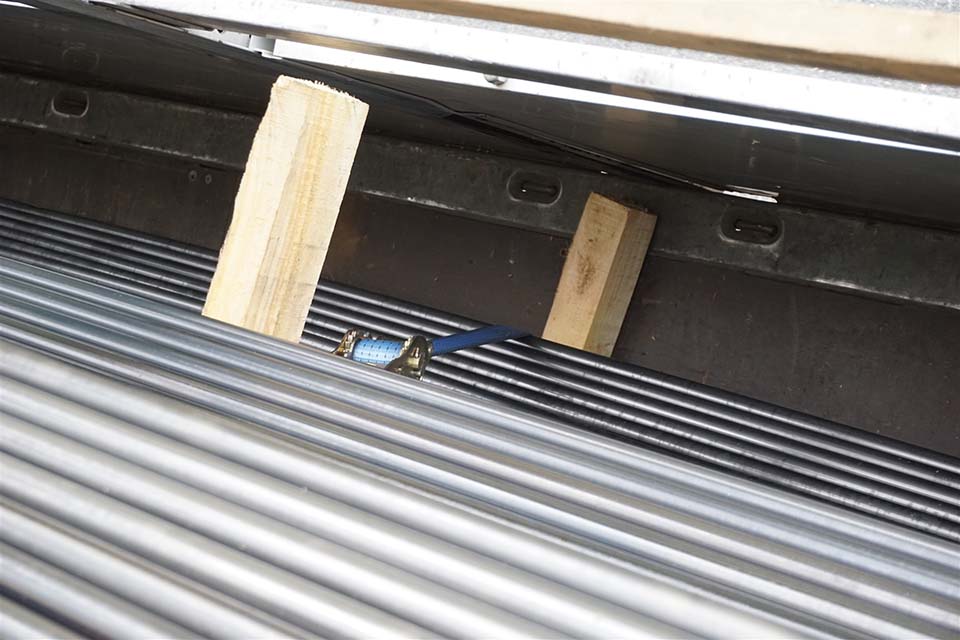
Figure 6 [Hochsauer Region Police]
Figures 5 and 6 clearly show that the belts were only used to bundle the load. According to the officers at the scene (whom we thank for the magnificent photos), not a single belt was used to lash down the load. In other words, no attempt whatsoever was made to secure the load.
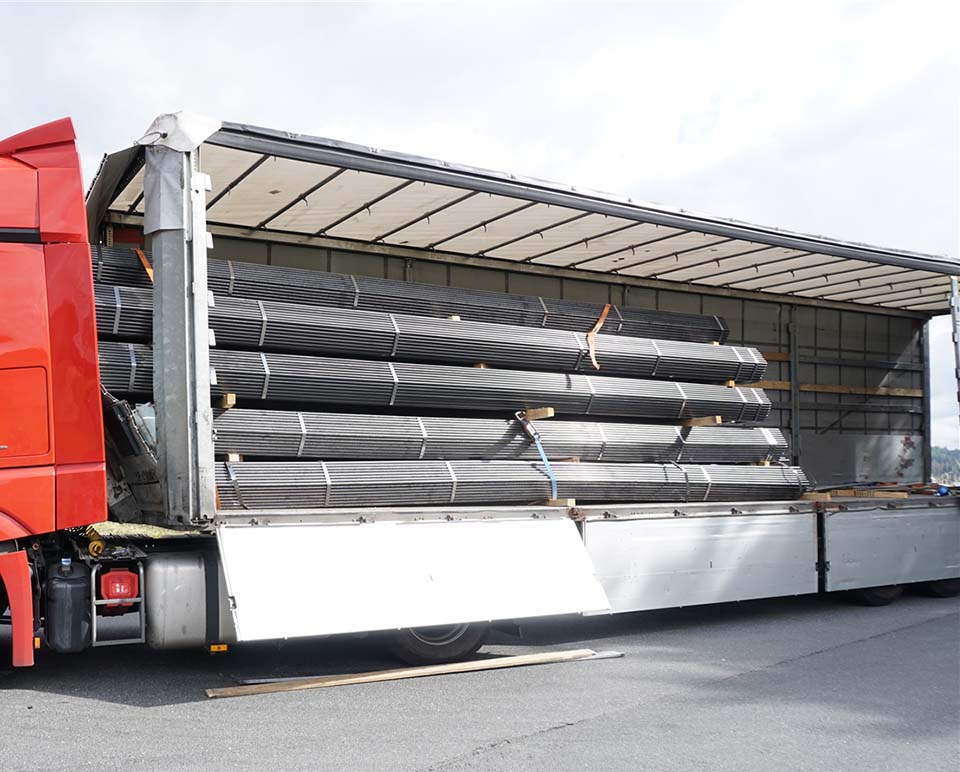
Figure 7 [Hochsauer Region Police]
It was probably thanks to the fact that the load was bundled that the load block slipped forwards to the end wall as a single unit. When it reached the front boundary of the loading bed, the load block came apart and concentrated on deforming the end wall.
How to secure the load properly:
So how do we secure a load like this?
- The load weighed 22.9 tonnes.
- Originally, the load distribution was (probably) okay.
- The securing force still needed to secure the load to the front is 4580 daN
- If tie-down lashings were to be used, it would be necessary to provide a pre-tensioning force of 7633 daN, which corresponds to eight belts with long-lever ratchet handles (the angles are very good).
- But we would opt for the following solution:
Two loop lashings would be attached at both the front and back, as we think it is a good idea to bundle the load and secure it well to the sides. We can only assume 500 daN of pre-tensioning force from each of the loop lashings to act as tie-down lashings. This provides 2000 daN of pre-tensioning force to secure the load. This means that we still need six belts (depending on the STF) as tie-down lashings. Provided that the belts are not placed near the steel strapping used to bundle the pipes, it is not necessary to use edge protectors, as the pipes are smooth, will not damage the belts and distribute the pre-tensioning force well to both sides. Because friction works in all horizontal directions, this arrangement also deals with securing the load to the rear.
Your load securing columnists wish you a relaxing autumn.
Back to beginning
